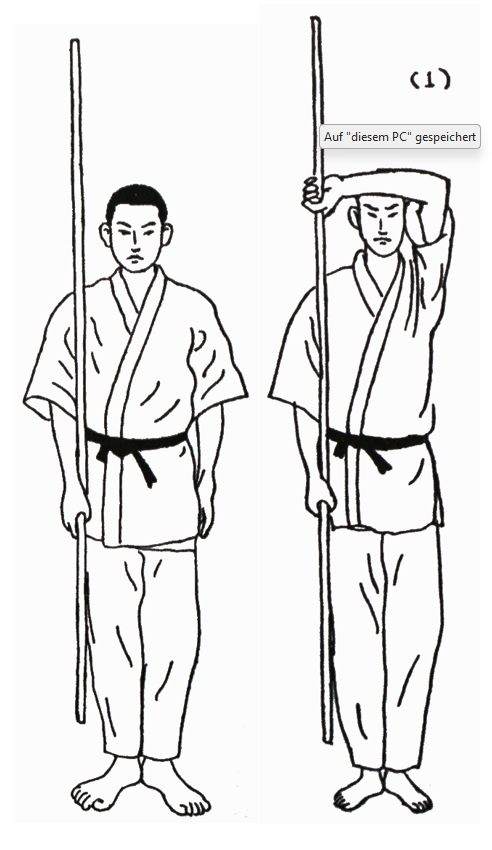The video at the end is a remake taken from an Okinawan Mēkata-bō. In particular, this Mēkata-bō was designated an Intangible Folk Cultural Asset on June 27, 1990.
Mēkata-bō is the opening dance for purification on stage or at festivals, and is meant to drive away epidemics, disasters, and evil spirits through powerful bō dances.
First of all the four directions remind of Ufugusuku no Kon, but the Mēkata-bō is much older.
Second, there are fragments of the original Chikin-bō (Tsuken-bō) in it, which was the origin if this kata shown here in excerpt. Particularly, there is the technique called sunakake (flinging sand) originally done with a paddel (uēku). So the kata was probably originally designed to be used with a paddle (uēku).
Third, beginning and ending of this Mēkata-bō are done in the traditional way as seen in most bō dances and village bōjutsu. It is the same as shown by Miki Nisaburō in his 1930 work (see illustrations below). So old bō dances, village bōjutsu, and Mēkata-bō had this in common with older bōjutsu from kobujutsu.
Mēkata-bō is performed in traditional costumes, with all movements shortened, merely hinted, so it doesn’t look like overly martial. And it is performed to music, so the moves are slow, rhythmic, and off-beat when considered from a combative perspective.
However, when stripped off of all the decorum and done intentionally as a martial technique, they can easily be performed as a kobudo, which in fact they are.
Note that this is an excerpt from the latter part of the original Mēkata-bō. Also, note that I don’t perform it in the original rythm nor in their style of gestures.
© 2024, Andreas Quast. All rights reserved.

